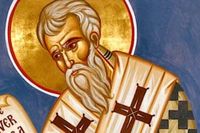March brings with it not only the blooming of spring flowers but also two significant celebrations—St. Patrick's Day and the feast of San Cirilo de Jerusalén. The observance of these days reveals the rich cultural and religious heritage people celebrate around the world.
On March 17, humanity rejoices as they commemorate St. Patrick's Day, honoring the patron saint of Ireland who passed away on this day during the year 461 AD. Born Maewyn Succat, St. Patrick was kidnapped by Irish pirates at the tender age of 16 and brought to Ireland, where he spent six years enslaved as a shepherd. Upon his escape, he returned home and later pursued his vocation as a priest. He eventually returned to Ireland as a Christian missionary, recognized for using the shamrock to explain the concept of the Holy Trinity—a tradition perpetuated by its symbolism during the modern-day celebrations.
The first documented St. Patrick's Day parade took place in New York City back in 1762. What began as modest military marches has evolved over the centuries, growing immensely to encompass parades, festive feasts, and many cultural events worldwide. Today, iconic landmarks like the Sydney Opera House and the Eiffel Tower glow green to honor this celebration, illustrating its global reach and appeal.
The connotations of green extend beyond mere aesthetics; it symbolizes Ireland’s lush landscapes, earning the nickname “Emerald Isle.” Historically linked to the Irish nationalist movement, the color has now become synonymous with St. Patrick's Day traditions, including the wear of green attire, drinking green-tinted beverages, and celebrating Irish culture through dance and music. Cities across the globe host events filled with traditional Irish music, folk dances, and community feasting, attracting considerable crowds and fostering cultural connections.
Contrastingly, on March 18, Catholics commemorate San Cirilo de Jerusalén, who marked his earthly passage around the year 386. Born around 315 AD, he succeeded Bishop Máximo at 35 years old at Jerusalem's episcopal seat. St. Cyril emerged as one of the most significant theologians of his time, known for his fierce opposition to the Arian heresy, which contested the divinity of Christ. His extensive writings, including twenty-three catechetical lectures written approximately between 347 and 348 AD, provide insights on fundamental aspects of the Christian faith; hence, he was honored with the title Doctor of the Church.
San Cirilo's teachings formed the foundation of various Christian doctrines, and still resonate with believers today. The Church recognizes roughly 1,294 men by the name Cirilo, celebrating this day as their saint's day, reflecting the saint's enduring influence within many communities.
March not only signifies joys and festivities but also illuminates the tenacity of cultural heritage through these saintly commemorations. St. Patrick’s celebrations draw people of all backgrounds to join one another, cultivating shared experiences through music, parades, and culinary delights. Meanwhile, the feast of San Cirilo de Jerusalén serves as a more solemn occasion, reflecting on the theological contributions of early Christianity.
Today, faithful gatherings and prayers dedicated to fortunate intercessions highlight both celebrations elegantly drawing together individuals around religious and historical contexts. For Irish communities and those who embrace their heritage alike, St. Patrick's Day provides opportunity, fellowship, and the immortalization of Irish history. Conversely, San Cirilo de Jerusalén stands as a beacon of enduring faith across centuries of Christian development.
Events on both these days exemplify humanity's simultaneous embrace of cultural identity and shared beliefs, fostering connections across diverse communities. Whether reveling with friends over green beers or reflecting on foundational religious teachings, March serves to remind us of the rich stories contained within these celebrated memories.







